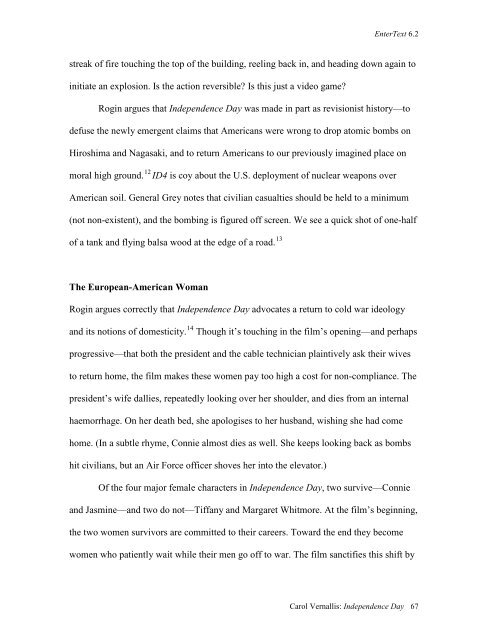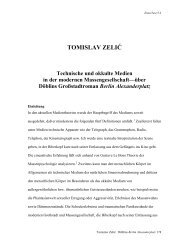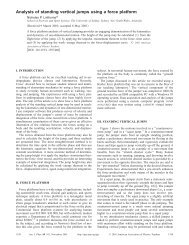Militarism, Misanthropy and the Body Politic: - Brunel University
Militarism, Misanthropy and the Body Politic: - Brunel University
Militarism, Misanthropy and the Body Politic: - Brunel University
You also want an ePaper? Increase the reach of your titles
YUMPU automatically turns print PDFs into web optimized ePapers that Google loves.
EnterText 6.2<br />
streak of fire touching <strong>the</strong> top of <strong>the</strong> building, reeling back in, <strong>and</strong> heading down again to<br />
initiate an explosion. Is <strong>the</strong> action reversible? Is this just a video game?<br />
Rogin argues that Independence Day was made in part as revisionist history—to<br />
defuse <strong>the</strong> newly emergent claims that Americans were wrong to drop atomic bombs on<br />
Hiroshima <strong>and</strong> Nagasaki, <strong>and</strong> to return Americans to our previously imagined place on<br />
moral high ground. 12 ID4 is coy about <strong>the</strong> U.S. deployment of nuclear weapons over<br />
American soil. General Grey notes that civilian casualties should be held to a minimum<br />
(not non-existent), <strong>and</strong> <strong>the</strong> bombing is figured off screen. We see a quick shot of one-half<br />
of a tank <strong>and</strong> flying balsa wood at <strong>the</strong> edge of a road. 13<br />
The European-American Woman<br />
Rogin argues correctly that Independence Day advocates a return to cold war ideology<br />
<strong>and</strong> its notions of domesticity. 14 Though it’s touching in <strong>the</strong> film’s opening—<strong>and</strong> perhaps<br />
progressive—that both <strong>the</strong> president <strong>and</strong> <strong>the</strong> cable technician plaintively ask <strong>the</strong>ir wives<br />
to return home, <strong>the</strong> film makes <strong>the</strong>se women pay too high a cost for non-compliance. The<br />
president’s wife dallies, repeatedly looking over her shoulder, <strong>and</strong> dies from an internal<br />
haemorrhage. On her death bed, she apologises to her husb<strong>and</strong>, wishing she had come<br />
home. (In a subtle rhyme, Connie almost dies as well. She keeps looking back as bombs<br />
hit civilians, but an Air Force officer shoves her into <strong>the</strong> elevator.)<br />
Of <strong>the</strong> four major female characters in Independence Day, two survive—Connie<br />
<strong>and</strong> Jasmine—<strong>and</strong> two do not—Tiffany <strong>and</strong> Margaret Whitmore. At <strong>the</strong> film’s beginning,<br />
<strong>the</strong> two women survivors are committed to <strong>the</strong>ir careers. Toward <strong>the</strong> end <strong>the</strong>y become<br />
women who patiently wait while <strong>the</strong>ir men go off to war. The film sanctifies this shift by<br />
Carol Vernallis: Independence Day 67
















